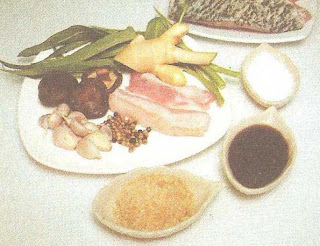Khanom Hmor Gaeng Ling ขนม หม้อแกงลิง
|
Thanks to Koh Lanta Ko Lanta dot com for this Recipe | MorGaeng Ling (Or Mor Gaeng Mor Khang in Lanta island terminology) is a carnivourous plant that eats insects by trapping them in it’s jug-like protuberances. It is to be found on Koh Lanta ever more rarely.It was a traditional sweet that previous generations on Lanta island ate often.Before the advent of tourism, the locals of Koh Lanta (or Ko Lanta as an alternative spelling),did not have many shops on the island to buy premade products, such as cookies etc.Instead they made their specialities from the things they found from the natural enviroment around them.Mr. Baw, best friend of the author of kohlantakolanta.com, is a perfect example of how a Kohlanta-islander survives without the need for money exchanging hands too often.Trade and barter is a common occurence, and many tasks are completed using the things one has at hand from Mother Nature.”Khanom Mor Ling Mor Khang” is a wonderful example of how simple Thai people are able to make luxurious and enjoyable things to consume without the need to go to great expense. The simple people of Kohlanta can teach us how a quality lifestyle can be lived without the need for unthriftiness. Khanom Morling Morkhang (Or Mor Ganeg Ling to be more precise according to general terminology off the island), is the name given to the sweetmeat that is made from this carnivourous plant that is still being collected prepared and eaten by Mr. Baw and his family (including the author of this website - this sweet is so delicious it is unimaginable that anyone might not like it).A type of “Khanom” (meaning “sweets”), made from freshly grated coconut flesh and coconut-milk made by passing the inside of a half-nut over a round shaped grinding machine.The machine scrapes the flesh off the inside wall of the shell leaving itextremely finely grated. Picture left - Preparing the Morling Morkhang by filling the plant with sticky rice, coconut milk (กะทิ), and grated coconut flesh.Fotos by Spencer Littlewood - cook in fotos “Ree” (Mr. Baw’s wife). |











